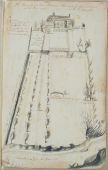Difference between revisions of "John Bartram"
[http://www.nga.gov/content/ngaweb/research/casva/research-projects.html A Project of the National Gallery of Art, Center for Advanced Study in the Visual Arts ]
(→Texts) |
(→Texts) |
||
| Line 10: | Line 10: | ||
*December 3, 1762, describing Charleston, S.C. (quoted in Darlington 1849: 242–43) <ref name="Darlington_1849"></ref> | *December 3, 1762, describing Charleston, S.C. (quoted in Darlington 1849: 242–43) <ref name="Darlington_1849"></ref> | ||
:“I can’t find, in our country, that south [[wall]]s are much protection against our cold, for if we cover so close as to keep out the frost, they are suffocated.” | :“I can’t find, in our country, that south [[wall]]s are much protection against our cold, for if we cover so close as to keep out the frost, they are suffocated.” | ||
| − | |||
| − | |||
| − | |||
| − | |||
| − | |||
| − | |||
| − | |||
| − | |||
| − | |||
| − | |||
| − | |||
| − | |||
| − | |||
| − | |||
| − | |||
| − | |||
| − | |||
| − | |||
| − | |||
| − | |||
| − | |||
| − | |||
| − | |||
| − | |||
| − | |||
| − | |||
| − | |||
| − | |||
| − | |||
| − | |||
| − | |||
| − | |||
| − | |||
| − | |||
| − | |||
| − | |||
| − | |||
| − | |||
| − | |||
| − | |||
Revision as of 19:09, March 26, 2015
Texts
- July 18, 1739, describing Westover, seat of William Byrd II, on the James River, Va. (1992: 121) [1]
- “Col Byrd is very prodigal in Gates roads walks hedges & seeders [cedars] trimed finely & A little green house with 2 or 3 [orange] trees . . .”
- June 24, 1760, in a letter to Peter Collinson, describing his plans for the Bartram Botanic Garden and Nursery, vicinity of Philadelphia, Pa. (quoted in Darlington 1849: 224) [2]
- “Dear friend, I am going to build a greenhouse. Stone is got; and hope as soon as harvest is over to begin to build it, to put some pretty flowering winter shrubs, and plants for winter’s diversion; not to be crowded with orange trees, or those natural to the Torrid Zone, but such as will do, being protected from frost.”
- December 3, 1762, describing Charleston, S.C. (quoted in Darlington 1849: 242–43) [2]
- “I can’t find, in our country, that south walls are much protection against our cold, for if we cover so close as to keep out the frost, they are suffocated.”
- Darlington, William, 1849, describing Bartram Botanic Garden and Nursery, vicinity of Philadelphia, Pa. (pp. 18–19) [2]
- “He [John Bartram] was, perhaps, the first Anglo-American who conceived the idea of establishing a BOTANIC GARDEN for the reception and cultivation of the various vegetables, natives of the country, as well as exotics, and of travelling for the discovery and acquisition of them.*
- “* The BARTRAM BOTANIC GARDEN, (established in or about the year 1730,) is most eligibly and beautifully situated, on the right bank of the river Schuylkill, a short distance below the city of Philadelphia. Being the oldest establishment of the kind in this western world, and exceedingly interesting, from its history and associations,—one might almost hope, even in this utilitarian age, that, if no motive more commendable could avail, a feeling of state or city pride, would be sufficient to ensure its preservation, in its original character, and for the sake of its original objects. But, alas! there seems to be too much reason to apprehend that it will scarcely survive the immediate family of its noble-hearted founder,—and that even the present generation may live to see the accumulated treasures of a century laid waste—with all the once gay parterres and lovely borders converted into lumberyards and coal-landings.”
Images
References
Notes
- ↑ John Bartram, The Correspondence of John Bartram, 1734-1777, ed. by Edmund Berkeley and Dorothy Smith Berkeley (Gainesville: University Press of Florida, 1992), view on Zotero.
- ↑ 2.0 2.1 2.2 William Darlington, Memorials of John Bartram and Humphry Marshall: With Notices of Their Botanical Contemporaries (Philadelphia: Lindsay & Blakiston, 1849), view on Zotero.
